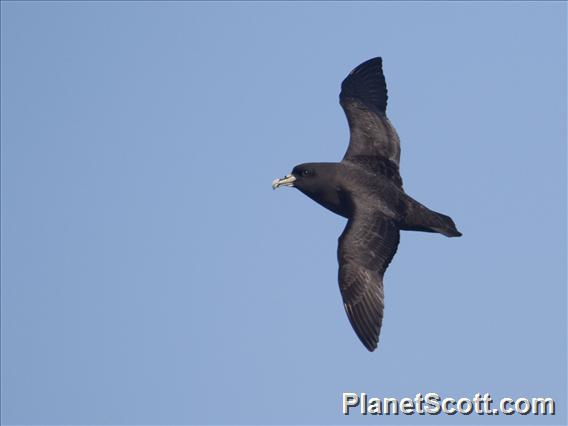White-chinned Petrel (Procellaria aequinoctialis)

White-chinned Petrel (Procellaria aequinoctialis)
×


White-chinned Petrel (Procellaria aequinoctialis)
About White-chinned Petrel (Procellaria aequinoctialis)
- Kingdom: Animals
- Phylum: Chordates
- Class: Birds
- Order: Tubenoses
- Family: Shearwaters and Petrels
The white-chinned petrel also known as the Cape hen and shoemaker, is a large shearwater in the family Procellariidae. It ranges around the Southern Ocean as far north as southern Australia, Peru and Namibia, and breeds colonially on scattered islands. The white-chinned petrel was formerly considered to be conspecific with the spectacled petrel.
Source: Wikipedia
Visits
-
2003-01-11
Walvis Bay, Namibia -
2005-02-02
Ushuaia - Beagle Channel, Argentina -
2012-01-20
Kaikoura, New Zealand -
-
-
-
-
-
-
-


